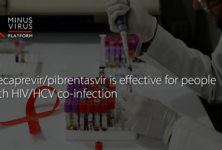Nine countries — Australia, Brazil, Egypt, Georgia, Germany, Iceland, Japan, the Netherlands and Qatar — are on course to eliminate hepatitis C by 2030, according to data released at the World Hepatitis Summit in São Paulo, Brazil, this week.
The World Health Organization’s elimination target challenges countries to aim for a 90% reduction of new hepatitis B and C infections and a 65% reduction in hepatitis B and C related mortality by 2030.
Estimates presented by the Polaris Observatory, developed from all available national data, show a stark contrast in progress towards HCV elimination in two of the world’s wealthiest countries, Australia and the United States.
Low awareness and barriers to care in the United States
According to the Polaris Observatory estimates just over half of people with hepatitis C in the United States are aware of their infection. Although rates of diagnosis are high in New York state (81%) and California (71%), other states are doing less well, and the United States is also experiencing a sharp increase in new hepatitis C infections in young adults and adolescents as a result of sharing of injecting equipment.
In 2015, the USA treated around 256,000 patients and some 230,000 in 2016. Polaris’s latest projections suggest that without new initiatives to boost treatment and diagnosis rates the annual number treated across the USA will fall to just 130,000 per year by 2020. To reach the WHO 2030 elimination target, treatment levels must be sustained at 250,000 per year leading up to 2030. The USA is also unlikely to meet the targets set out in its own national plan, some of which are even more ambitious – such as a 60% fall in both hepatitis B and hepatitis C new infections by 2020.
In two thirds of states, treatment on Medicaid programs has been restricted to people with advanced disease, preventing treatment access for those without private insurance. However, the outlook is not entirely bleak — recent developments have meant the approval of new and cheaper hepatitis C drugs, which can be used to treat all types of the virus (genotypes 1-6), requiring just 8 weeks of treatment to achieve cure.
These lower prices are allowing states such as Delaware, which previously restricted treatment to the sickest patients, to open up Medicaid coverage to all hepatitis C patients from January 2018. Delaware joins 16 other states (including Alaska and Georgia) that will open up restrictions (or never had them).
At the recent Liver Meeting in Washington, DC (October 28) all states and Puerto Rico were graded on how easy it is to obtain Medicaid treatment for hepatitis C. States receiving the best grade of A were Alaska, Connecticut, Massachusetts, Nevada, and Washington. States that received an “F”, the worst grade, were Arkansas, Louisiana, Montana, Oregon, and South Dakota.
Australia
The Australian government responded to the call for universal access to the hepatitis C DAAs with an AUS $1billion dollar investment over 5 years. This risk-sharing agreement with pharmaceutical companies provides government-funded treatment to all adults without restriction and has paved the way for the elimination of hepatitis C by 2030. More than 30,000 patients with hepatitis C were treated and cured in 2016.
Following this agreement, huge numbers of people came forward for treatment immediately (some 5,000 in March 2016 alone). However, the number treated each month has steadily declined, from over 5,000 in March 2016 to less than 2,500 in March 2017, with signs the number will decrease further still. The Polaris estimate shows that Australia must treat around 20,000 patients with hepatitis C per year to reach the WHO elimination target it endorsed (a reduction of new hepatitis B and C infections by 90% and mortality by 65% by 2030). Polaris predicts annual treatment numbers for HCV could fall to 14,000 by 2018.
“Australia set off at a cracking pace on the journey to elimination of hepatitis C due to our unrestricted and easy access to treatment,” says Helen Tyrell, Chief Executive Officer, Hepatitis Australia. “From March 2016, when the cures became available, to December of that year around 14% of all people living with hepatitis C commenced treatment. However, the pace has slowed dramatically over time.”
She adds: “Worryingly, the latest estimates from the Polaris Observatory should be taken as a clear warning that the elimination of hepatitis C is unlikely to be achieved by 2030 if we continue ‘business as usual’. What we need now is a rapid scale up of a suite of programs to help connect all people with hepatitis C to the new cures while also continuing to prioritise evidence-based prevention. Provided Australia invests in this work and maintains a strong partnership approach across government, the community, clinicians and researchers, we can reach the goal of elimination of hepatitis C by 2030.”
By Keith Alcorn


 ПОИСК ПО САЙТУ
ПОИСК ПО САЙТУ  поиск по ресурсному центру
поиск по ресурсному центру 



